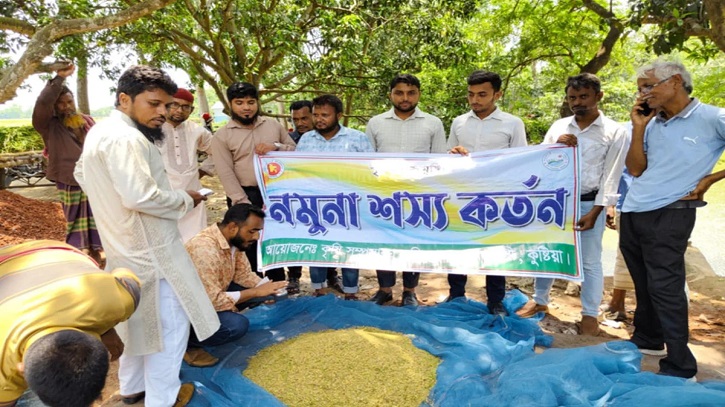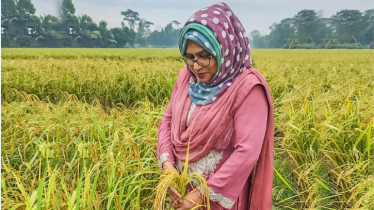
Kushtia, Bangladesh – Farmers in Bojorukh Bakhai field, Nandalalpur Union, Kumarkhali Upazila, Kushtia, have successfully cultivated BRRI Dhan-92 rice using modern synchronized and mechanized methods for the first time. Under an agricultural incentive program, 128 farmers cultivated 150 bighas of land using this Samaloy (synchronized) method, resulting in significantly higher yields and lower costs compared to traditional farming. Farmers are reporting an increase of 8 to 10 maunds per bigha, leading to widespread enthusiasm.
"Samaloy cultivation involves planting the same crop variety simultaneously in the same field using mechanized methods," explained Md. Raisul Islam, Upazila Agriculture Officer. "This reduces pest attacks, prevents land wastage, and ensures higher yields at lower costs." He added that under the 2024 fiscal year's agricultural incentive program, BRRI Dhan-92 cultivation in Bojorukh Bakhai field yielded 28-29 maunds per bigha, a notable increase over traditional methods.
During a field visit at noon, a combine harvester was observed cutting the paddy. Farmers, along with officials from the Department of Agricultural Extension and the Upazila administration, were present in the field.
Farmer Babul Hossain shared his experience: "Last year, I cultivated BRRI Dhan-29 and got 18-20 maunds per bigha. This year, using the mechanized method for BRRI Dhan-92 for the first time, I achieved 27-29 maunds. The costs were lower, and the profit was higher. I will definitely stick to Samaloy cultivation in the future."
Another farmer, Moktar Hossain, who cultivated about three bighas, said, "This method required fewer saplings and less effort, but the yield increased significantly. From now on, I will use machinery for cultivation."
Mithun, another farmer, highlighted the benefits: "Machine planting prevented land wastage. The plants grew well, and the yield was good. Mechanized farming is much easier than conventional methods, saving both labor and cost. Last year, I spent around 16,000 taka per bigha and got 19 maunds of rice and two thousand bundles of straw. This year, I spent only 10,000 taka and got 29 maunds of rice."
Sufi Md. Rafiquzzaman, Deputy Director of Kushtia Agricultural Extension Department, noted, "Using machines for seedling production, transplanting, and harvesting saves time and labor, leading to increased production. Farmers' interest in mechanized agriculture is also growing."
Upazila Nirbahi Officer (UNO) S M Mikail Islam affirmed that "Samaloy cultivation offers higher profits at lower costs. Therefore, incentive programs will be continued to boost production."





